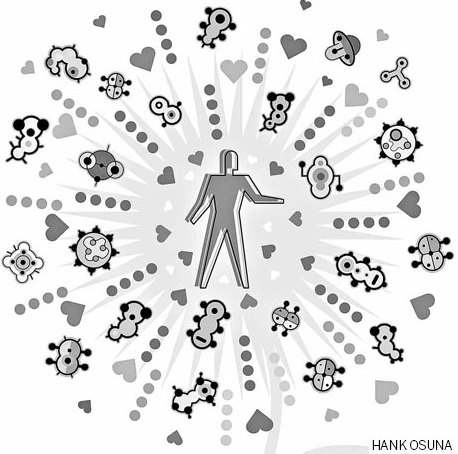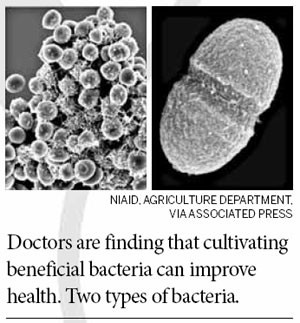Tending our microbial garden
Updated: 2012-07-01 08:45
By Carl Zimmer(The New York Times)
|
|||||||

For a century, doctors have waged war against bacteria with antibiotics. But that is changing as scientists become more familiar with the 100 trillion microbes that call us home - collectively known as the microbiome.
"I would like to lose the language of warfare," said Julie Segre, an investigator at the National Human Genome Research Institute in Bethesda, Maryland. "It does a disservice to all the bacteria that have coevolved with us and are maintaining the health of our bodies."
This new approach is known as medical ecology. By nurturing the body's invisible ecosystem, doctors may be able to find alternatives to antibiotics to fight infectious diseases, and with fewer harmful side effects. Tending the microbiome may also help in treating obesity and diabetes.
In June, Dr. Segre and about 200 other scientists published the most ambitious survey of the human microbiome yet. The Human Microbiome Project tracked 242 healthy people over two years. The scientists sequenced the genetic material of bacteria from their subjects' bodies, recovering over five million genes.
The project and other studies are revealing how our invisible residents shape our lives.
Recent reports shed light on how mothers promote babies' health by shaping their microbiomes. In a study in June in the journal PLoS One, Dr. Kjersti Aagaard-Tillery, an obstetrician at Baylor College of Medicine in Houston, and her colleagues found that the diversity of vaginal bacteria changes throughout pregnancy.
During delivery, a baby will be coated by the Lactobacillus johnsonii bacteria and ingest some of it. It is usually found in the gut, where it produces enzymes that digest milk. Dr. Aagaard-Tillery suggests that this inoculation prepares the infant to digest breast milk.
A University of Idaho study published last year found that women's milk had up to 600 species of bacteria. The more the good bacteria thrive, the harder it is for harmful species to grow.
As the child grows and the microbiome becomes more ecologically complex, it also tutors the immune system. Ecological disruptions can halt this education. Children who take high levels of antibiotics may be at greater risk of developing allergies and asthma, research suggests.
The mouth may contain 5,000 species of bacteria. "The closer you look, the more you find," said Susan M. Huse of the Marine Biological Laboratory in Woods Hole, Massachusetts, a contributor to the microbiome project.
Our bodies also host viruses. Many species in the human "virome" specialize in infecting our resident bacteria. But in DNA samples stored in the Human Microbiome Project's database, Kristine Wylie of Washington University in St. Louis and her colleagues are finding viruses that target human cells.
The microbiome also includes fungi. In the June 8 issue of the journal Science, David Underhill, a researcher at Cedars-Sinai hospital in Los Angeles, and his colleagues reported on fungal species in the guts of humans and other mammals. In mice, for example, they cataloged 100 new species, plus 100 already known.
The microbiome carries out many services. In the gut, microbes synthesize vitamins and break down plant compounds.

Antibiotics kill off harmful bacteria, but some can kill off many desirable species, as well.
A species of bacteria called Clostridium difficile will sometimes invade a person's gut after a course of antibiotics. Antibiotic-resistant C. difficile can be hard to eradicate.
Scientists think devastated microbiomes can be restored. "At least the data is starting to argue" it may be possible, said Barbara Methe of the J. Craig Venter Institute, an investigator on the microbiome project.
One way may be to foster beneficial bacteria. But the science of so-called probiotics lags sales: $28 billion in probiotic foods and supplements were sold in 2011, according to the research firm EuroMonitor International. But few have been rigorously tested.
A growing number of doctors are treating C. difficile with fecal transplants: stool from a healthy donor is delivered like a suppository to an infected patient. The idea is that the good bacteria in the stool establish themselves in the gut and begin to compete with C. difficile. This year, researchers at the University of Alberta concluded that the procedure is safe and effective.
Researchers at the Academic Medical Center in Amsterdam are exploring whether fecal transplants can treat obesity; scientists have linked obesity to changes to the gut's ecosystem.
"Like any ecosystem," said Michael A. Fischbach, a microbiologist at the University of California, San Francisco, "the microbiome is not the kind of place to find simple answers."
The New York Times
(China Daily 07/01/2012 page21)